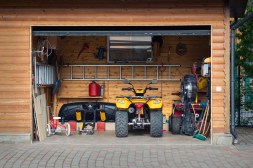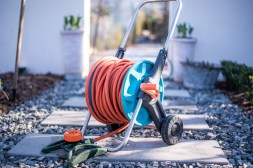The Cost-Benefit Analysis of Repairing vs. Replacing Outdoor Tools
Outdoor tools are essential for maintaining your garden, lawn, and landscape. However, like any equipment, they can wear out over time. Knowing when to repair or replace these tools can save you money and ensure you have the right equipment for the job. In this article, we will explore a cost-benefit analysis of repairing versus replacing outdoor tools to help you make informed decisions.
Understanding the Lifespan of Outdoor Tools
Different types of outdoor tools have varying lifespans based on their material quality and usage frequency. For example, hand tools like shovels and rakes can last decades with proper care, while power tools like lawnmowers or chainsaws might only last a few years before significant repairs are needed. Understanding how long your specific tools should last will help set expectations for maintenance and replacement.

The Benefits of Repairing Outdoor Tools
Repairing outdoor tools often proves to be more cost-effective than outright replacement if the damage is minor or easily fixable. Common repairs include replacing blades on pruners or sharpening lawn mower blades. Additionally, repairing can extend the life of your tool significantly while maintaining its original performance level—especially if it’s a high-quality tool that was an investment in the first place.
When Replacement Makes More Sense
However, certain situations clearly indicate that replacement is better than repair. If a tool requires extensive repairs that exceed half its replacement cost or if it’s outdated technology with limited availability for parts, it may be more economical to purchase a new one instead. Furthermore, newer models often come equipped with improved features and efficiencies that outdated models lack.
Assessing Repair Costs
When considering whether to repair an outdoor tool, assess not just the financial costs but also time and effort involved in making those repairs yourself versus hiring someone else to do it. Gathering estimates from local repair shops can provide insight into whether it’s worth it compared to purchasing a new item.
Making Informed Decisions Going Forward
Ultimately, knowing when to repair versus replace depends on a mix of factors including age, condition of the tool in question, frequency of use and budget constraints. Regular maintenance such as cleaning after use and storing properly can prolong their life considerably too. Keeping track of how much you’ve spent on repairs over time may also help guide future decisions about when it’s finally time for replacement.
In conclusion, deciding between repairing or replacing outdoor tools involves careful consideration of costs and benefits associated with each option. By assessing their lifespan, potential repair costs versus new purchases along with personal preferences regarding reliability versus innovation—you’re sure to make an informed decision that keeps your garden thriving.
This text was generated using a large language model, and select text has been reviewed and moderated for purposes such as readability.


